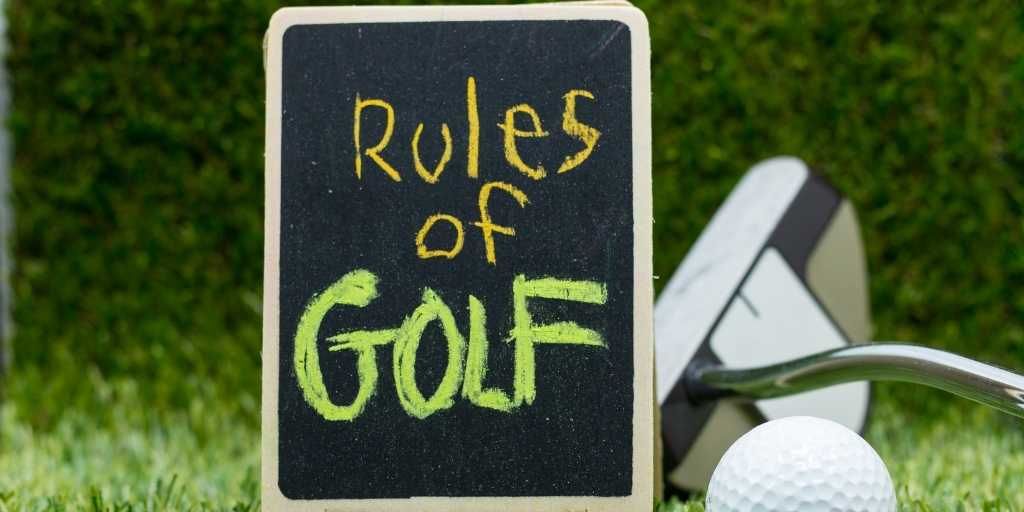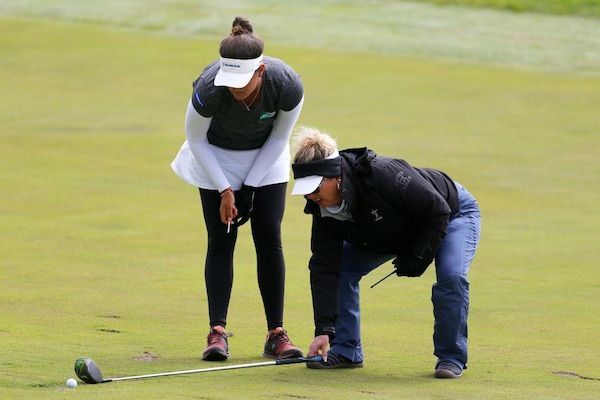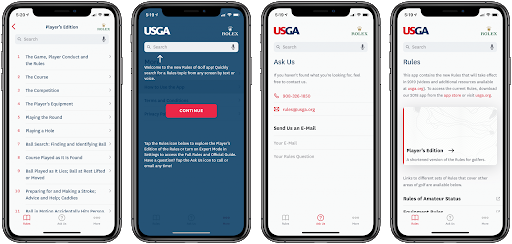
The Rules of Golf are incredibly dense and complicated. Golf itself is also unique in that rule judgments are typically on the players themselves. For many beginners and casual golfers, this leads to them merely not playing entirely by the rules. However, this is a mistake because playing within the Rules of Golf is the only way to get a fair and accurate score, especially in competition.
Perhaps even more importantly, the rules don’t exist just to penalize players, but several situations can greatly help golfers; it’s just a matter of knowing what those rules are. Let’s take a look at the top 5 rules that can help you out on the course.
Relief for Embedded Balls
Imagine you’ve just hit a soaring drive only to walk up and discover that the ball has buried itself into the soft, wet ground. Instead of trying to hack it out or taking an unplayable penalty, the rules now allow free relief for any embedded ball in the “general area,” including the rough or fairway, except for sand.
Simply drop the ball within one club-length of the spot directly behind where the ball was plugged, no closer to the hole, and take your next shot. If you play a lot in wet conditions, this rule can easily save a couple of strokes per round.
Drops Don’t Have to Be In the Same Condition

Most golfers know that if their ball stops on top of a drain, sprinkler head, or other objects, they get a free drop. Less known is that this drop doesn’t have to be in the same grass conditions that the ball was in. For example, if your ball finishes on a sprinkler head in the rough next to the green, your drop simply has to be within one club-length of the nearest point of relief, no closer to the hole, but doesn’t have to be in the rough. It could be on the fairway, fringe, or even the green itself!
Any time you find yourself in this type of situation, be sure to carefully consider which drop point will be best for your next shot.
The Ball Can Move While Searching for It
Playing golf in the fall or just a heavily wooded course means there are likely piles of leaves or pine needles waiting to gobble up any ball that misses the fairway. If you happen to move the ball while searching for it, there is no penalty, simply replace it back to the original spot and play away.
Additionally, there still is no penalty even if the search happens to improve the lie condition by removing leaves, for example, or lifting the ball from deep grass to reasonably identify it. This rule even applies in the penalty area, an essential point for the next rule.
You Can Play a Ball in a Penalty Area
There are different types of penalty areas in golf. If your ball lands out of bounds, usually defined by white stakes, you can’t play a shot from where it lies. However, for a red stake and yellow stake penalty area, you can play the ball as it lies with no penalty.

There have been famous (and infamous) examples of tour pros playing shots from within water hazards to save the penalty stroke. While you might not want to take off your shoes and roll up your pants to play a ball out of the water, as long as you can find and identify your ball (see above) within a hazard, you have the option to play it without penalty.
You (Probably) Don’t Have to Take Stroke and Distance Penalties for Hitting OB
In the past, if you hit a ball out of bounds, the only legal play was to reload from the exact same spot and take a one-stroke penalty, commonly called stroke and distance. After a rules update, however, you might have another option.
Instead of teeing off again after hitting a drive out of bounds, you can drop on the edge of the fairway in line with where your ball went OB, no closer to the hole. This drop comes with a two-stroke penalty that might be your best option and especially helpful for improving the pace of play. Note that this is a recommended local rule, so you’ll have to check with the course to see if it is officially in play there.
Knowing the Rules is Easier Than Ever

Both the USGA and the R&A have put a lot of effort in recent years to make the Rules of Golf more accessible and applicable to casual golfers, keeping the game challenging and fun for all while maintaining the spirit of the game. Many of the rules noted above are recent changes done with the understanding that most golfers don’t get to play under the same ideal course conditions tour players have and that they shouldn’t be penalized for that.
Additionally, the rules are easier to find than ever before, including through a smartphone app that has the rules and everyday situations, learning videos, and quizzes. All this means that learning the Rules of Golf is not only easier than ever but might even be considered fun.
Have any other favorite rules or rule stories to share? Join us over on the Practical Golf Forum.
We care about the protection of your data Read our Privacy Policy